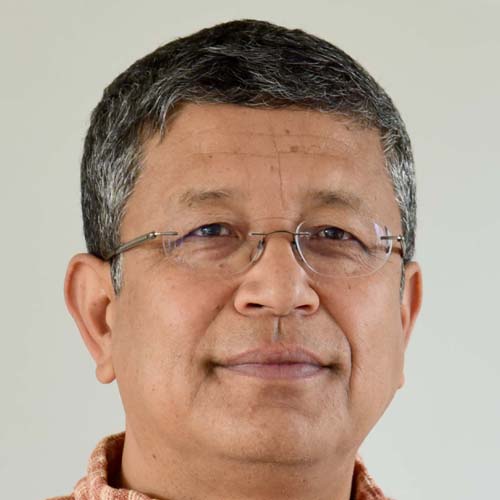Columns
Partial human development
For a number of reasons, certain groups do better than others but we are not being told by how much.
Deepak Thapa
There is no need to belabour the truism that we do not as yet live in a post-caste/post-ethnic Nepal where one’s identity does not engender prejudice that can lead to discrimination or preference. In fact, far from it. But tell that to the body responsible for the census itself, the National Planning Commission (NPC), which has taken upon itself to pretend otherwise.
Take two of its somewhat recent publications: the Nepal Human Development Report 2020 (NHDR 2020) and the Nepal Multidimensional Poverty Index 2021. Both consist of highly detailed analyses of the Nepali condition and certainly provide more than some cause for cheer considering how the figures show us moving resolutely forward. It is not without reason that the NHDR 2020 is able to claim, “Nepal has made notable strides in overall human development and poverty reduction. With progress on all three basic dimensions of human development, it has reached the middle human development category.”
Singular achievement
Comparing data from 2019 with the one from 2014, the publication dealing with the multidimensional poverty index (MPI), which measures progress (or regress) along 10 indicators—nutrition, child mortality, years of schooling, school attendance, cooking fuel, sanitation, drinking water, electricity, housing and assets—is equally ecstatic about how far we have come given that “the incidence of multidimensional poverty nationally fell from 30.1 percent in 2014 to 17.4 percent, and MPI dropped from 0.133 to 0.074, nearing being cut by nearly half in a mere five years”. In other words, “3.1 million people left poverty in a mere five years, with only 5 million left to exit”. That is indeed a singular achievement given the uncertain politics plaguing the country, not to mention the devastating effect of the 2015 earthquake.
What has been left out though is any indication of how the reduction in poverty has affected all of Nepal’s social groups. The NHDR 2020 does admit that “[s]ocial exclusion is both a cause and a consequence of inequality and discrimination on the basis of hierarchies of gender, caste, ethnicity, class, sexual orientation, disability, age and regionality” and the need to “address structurally generated poverty, vulnerable employment and social exclusion” but provides zilch on how these could be countered. With regard to the MPI, both the 2021 report and the earlier one from 2018 are completely silent on these issues with the main focus on looking at multidimensional poverty at the provincial level.
Understanding how the various provinces have been faring is very useful and will certainly provide a fillip to those partisan towards the federal exercise. This nugget from the 2021 MPI report is instructive: “In 2014, Province 2 was the poorest province, whereas by 2019 it was the third poorest. Karnali Province, the second poorest province in 2014, had the second fastest reduction of MPI…”
One would hardly have imagined the rapid progress being made by these two regional laggards. But this also masks the fact that Province 2 is still home to 26 percent of those who are multidimensionally poor. Neither is there any indication of who within Province 2, or, for that matter, in all of Nepal, is doing better or worse. This is particularly pertinent since, as the NHDR 2020 notes, the constitution “requires special provisions by law for the protection, empowerment and development of socially or culturally backward women, including from Dalit, indigenous, Madhesi, Muslim and other oppressed groups”. Such policies are certainly in place at all three levels of government; but without any information on what progress has been made or not, there is no knowing whether the constitutional guarantees are being fulfilled or not.
Even though the government is currently not too keen to publicise data on caste/ethnicity, what we do know from available information is that the record has not been all that great. Many will still remember the pleasant surprise to learn in the mid-2000s that the national poverty rate had declined from 42 percent in 1995-96 to 31 percent in 2003-04 despite the ongoing Maoist conflict. Disaggregated data from the World Bank, however, showed a somewhat skewed picture. Thus, while poverty rates nearly halved over that period for the Bahun/Chhetri group (from 34 to 19 percent), none of the other groups came even close, with Hill Janajatis (49 to 44 percent) and Muslims (44 to 41 percent) performing the worst while the proportion of Dalits under the poverty line remained at a high of 47 percent, albeit having shrunk from the 59 percent earlier.
For a number of reasons, certain groups do better than others even when special provisions have been made for those underprivileged. Hence, although by 2010-11, national poverty levels had shrunk to 25 percent, an Asian Development Bank paper showed that the proportion of Hill Dalits in poverty remained strong at 44 percent while for Tarai Dalits, it was 38 percent. Hill Janajati poverty levels were still high at 28 percent compared to the sharp reduction among Newars and Bahuns to 10 percent each. Results from a more recent survey conducted by Tribhuvan University showed that in the years between 2012 and 2018, Hill Bahuns as a group more than doubled their annual household per capita consumption, an increment no other group could match.
One understands that the rancour caused by the debate over the form of federalism that consumed Nepal for nearly a decade has made the government wary of delving deeper into structural barriers or publicising information that shows the impact these still have on Nepali society. Yet one cannot escape what a previous NPC publication, the NHDR 2014, had recommended: “To monitor progress in the coming years, national surveys would need to incorporate additional regional and ethnic dimensions in their sampling frameworks…Nepal has been at the forefront of adopting many path-breaking policies to facilitate inclusive development, but weak monitoring has meant that the intent of these remains far from realised.”
Foundation and roots
Instead, the NPC would have us believe that differences arising out of one’s social identity no longer matter in today’s Nepal. Only that can explain the silence of the thus-far two MPI reports on that issue. The Oxford Poverty and Human Development Initiative that developed the MPI and which helped prepare both, did not push back hard enough. Which is actually quite the irony since the 2021 global MPI report actually carries the subtitle “Unmasking disparities by ethnicity, caste and gender” and unequivocally states, “Inequalities across ethnic groups remain prevalent in multiple countries…Another priority [of governments] should be collecting better and more frequent data on ethnicity and group-based deprivations in order to enable efficient monitoring, reporting and targeting of poverty and inequalities across ethnic groups.”
In his acceptance speech, this year’s Madan Puraskar laureate, Bhagi Raj Ingam, made an observation relevant to the discussion here: “All the castes, ethnicities and communities are the country’s foundation and roots. Only if the foundation is strong will the house be strong. Only if the roots are strong will the tree stand firm.” Wonder how this very simple but profound truth can continue to elude our rulers and their technocratic help who, in spite all evidence to the contrary, want everyone to think that all the roots are developing equally strongly. Maybe they are but most likely they are not. We will never know unless the facts are presented before us.




 7.12°C Kathmandu
7.12°C Kathmandu













%20(1).jpg&w=300&height=200)

